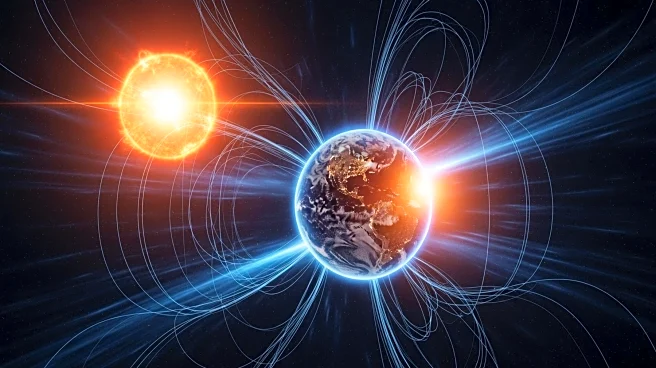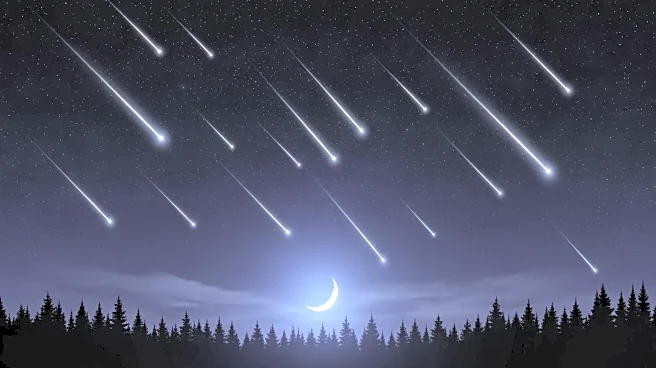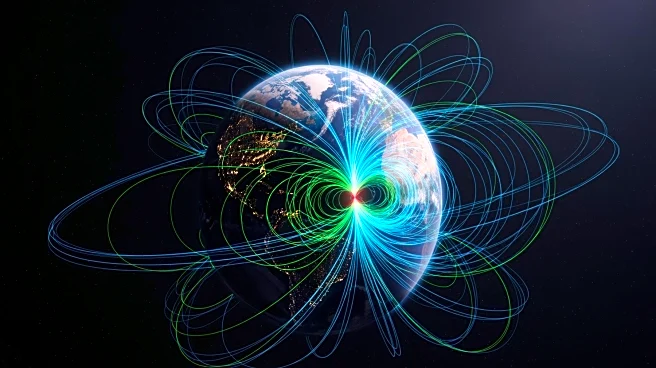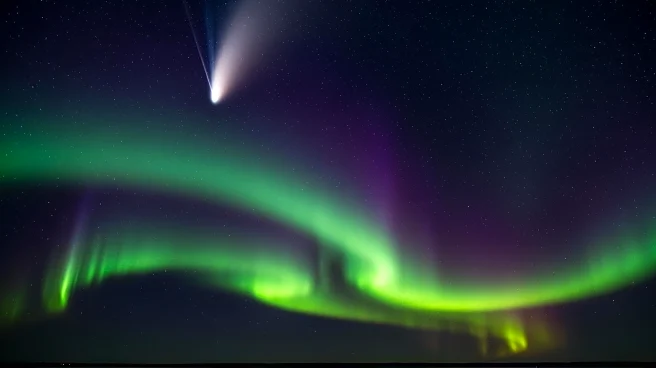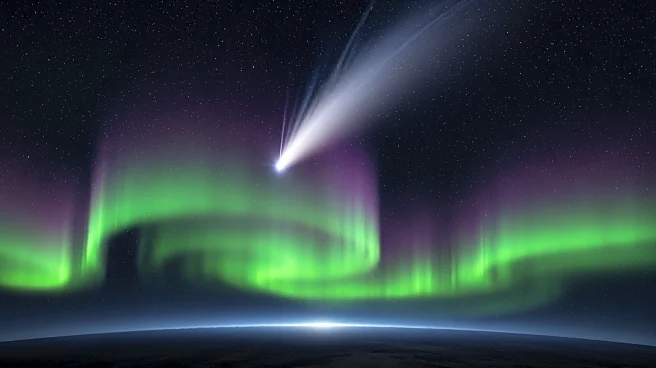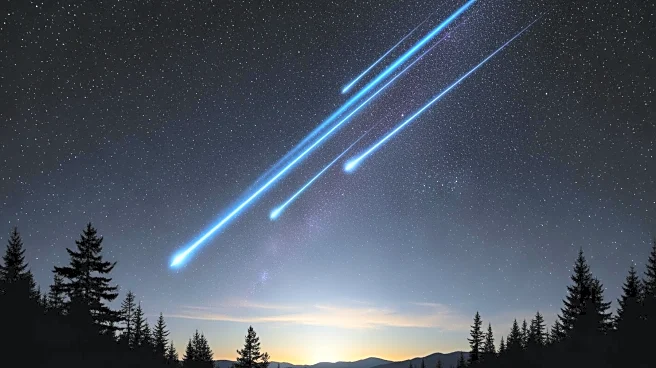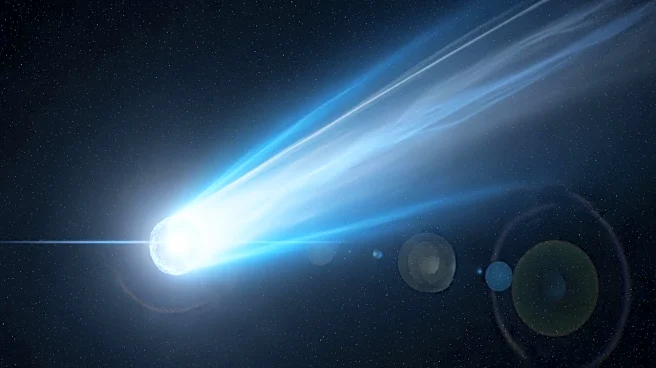What's Happening?
A massive geomagnetic superstorm in May 2024 provided scientists with unprecedented insights into the collapse and recovery of Earth's plasma shield under extreme solar pressure. The event, known as the Gannon storm or Mother's Day storm, was the most
intense superstorm in over two decades. Researchers, using the Arase satellite, observed the plasmasphere shrink to a fraction of its usual size, taking days to recover. This prolonged disruption affected GPS accuracy, satellite operations, and space weather forecasting. The storm caused intense heating near the poles, leading to a significant drop in charged particles across the ionosphere, which slowed recovery. The storm's effects included breathtaking low-latitude auroras and disruptions in satellites, GPS, and communications.
Why It's Important?
The geomagnetic superstorm highlighted vulnerabilities in satellite and GPS systems, which are crucial for navigation, communication, and various technological applications. The prolonged recovery of the plasmasphere and ionosphere can lead to significant disruptions in these systems, affecting industries reliant on precise location data and communication networks. Understanding the dynamics of such superstorms is essential for improving predictions and safeguarding space technology. The event underscores the need for robust space weather forecasting to mitigate potential impacts on critical infrastructure and services.
What's Next?
Future research will focus on improving space weather forecasting and understanding the mechanisms behind plasmasphere and ionosphere recovery. Scientists aim to develop better predictive models to anticipate disruptions and protect satellite operations and GPS systems. The findings from the May 2024 superstorm will contribute to enhancing the resilience of space-based technologies against extreme solar events.
Beyond the Headlines
The superstorm's impact on auroras, typically seen near polar regions, extended to mid-latitude areas, offering a rare visual phenomenon. This shift in auroral zones highlights the potential for geomagnetic storms to affect regions not usually exposed to such events. The study of negative storms, which alter atmospheric chemistry and slow plasmasphere recovery, provides new insights into space weather dynamics and their broader implications.
